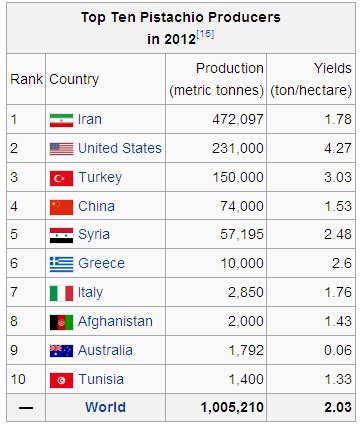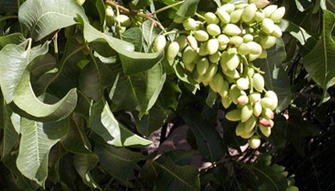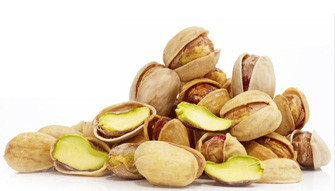Habitat
The pistachio, a member of the cashew family, is a small tree originally from the Middle East. Pistachio trees can be mainly found in regions of Iran and the United States, specifically in California. The tree produces seeds that are widely consumed as food.
Pistachio is a desert plant, and is highly tolerant of saline soil. It has been reported to grow well when irrigated with water having 3,000–4,000 ppm of soluble salts.[7] Pistachio trees are fairly hardy in the right conditions, and can survive temperatures ranging between −10 °C (14 °F) in winter and 48 °C (118 °F) in summer.
Characteristics
The fruit is a drupe, containing an elongated seed, which is the edible portion. The seed, commonly thought of as a nut, is a culinary nut, not a botanical nut. The fruit has a hard, whitish exterior shell. The seed has a mauvish skin and light green flesh, with a distinctive flavor. When the fruit ripens, the shell changes from green to an autumnal yellow/red, and abruptly splits part way open.
Each pistachio tree averages around 50 kilograms (110 lb) of seeds, or around 50,000, every two years. The shell of the pistachio is naturally a beige color, but it is sometimes dyed white or red in commercial pistachios. Originally, dye was applied by importers to hide stains on the shells caused when the seeds were picked by hand. Most pistachios are now picked by machine and the shells remain unstained, making dyeing unnecessary except to meet ingrained consumer expectations.
Cultivation
Iran, the United States and Turkey are the major producers of pistachios. The trees are planted in orchards, and take approximately seven to ten years to reach significant production.
Bulk container shipments of pistachio kernels are prone to self-heating and spontaneous combustion because of their high fat and low water content.[


 Contact Us
Contact Us

